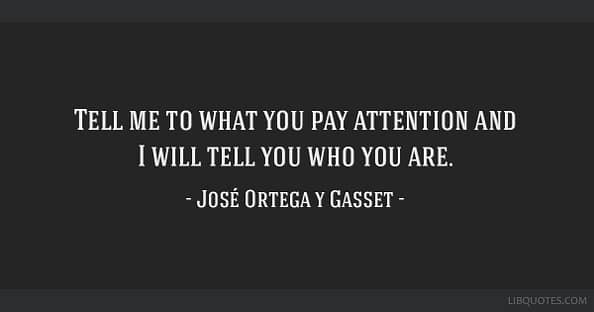In this age of electronic devices and media outlets, there are endless numbers of things vying for our attention. In fact, there is so much information coming in at such a high rate that our minds are truly overrun by stimuli.
Our nervous system is consistently gathering information, but our brain has limits on the amount of information it can focus on and process at any given time. And we can become so consistently distracted that we end up spending time and energy on things that do not matter. If we can direct our attention to what is most important and let go of distractions, we can more successfully and efficiently achieve our goals, feel how we want to feel, and create the life we want to live.
From the borage of non-stop messaging our minds have to wade through, we can get tricked into believing that our attention should be on things outside of ourselves. We may use our energy paying attention to what other people are doing, how they are living their lives, what others are achieving, what and who others think we should be, and so on. This practice of constantly looking outside of ourselves feeds the cultural norm of comparison and judgment, which frequently leaves us feeling bad about ourselves.
We can get so distracted by things outside of us, that we aren’t even noticing our own thoughts. Our thoughts create our reality, influence how we feel, and direct how we show up in our lives. And we create thoughts about what we are paying attention to.
Mindfully choosing the information that we focus on can have an impact on our quality of life. If we can mind our own mind, we can begin to recognize that we are not our thoughts or our emotions and as the watcher of our mind, we can direct our thoughts to create the results that we desire.

When we first begin to recognize the thoughts that we automatically engage in, we may find that there are more negative thoughts than we would like. These are sometimes referred to as ANTs or Automatic Negative Thoughts. The best thing to do when we identify one of these thoughts is to watch for it and to simply identify or label the thought when it pops up. If we can call them out, they will no longer be the stealthy programming that is happening without our noticing. This practice of thought awareness is what pulls us out of auto-pilot and gives us the choice to make changes.
Next, we want to stop ourselves from reflexively trying to replace the negative thoughts with positive ones. If we have been in the habit of believing the negative thoughts, it is more helpful to first shift toward a neutral thought. For example, if we are starting to recognize an automatic thought like “I am so stupid”, it would be too far of a leap for the mind to switch to instantly believing something like “I am brilliant”, so perhaps we begin with a thought like “I am learning”.
With consistent awareness and redirection to a neutral thought, the negative thoughts will begin to fall away and we will experience a shift in how we feel and how we show up in our lives as the result of our thinking. It takes practice, but it is well worth it.
This week, I invite you to pay attention to your thoughts. Label one that is not helpful and see if you can practice shifting it toward a neutral thought whenever it pops up.
I will be practicing right along with you.
Chat again soon,
k